You love the durability of medium-density fiberboard or MDF, especially because it’s so easy to seal or paint. However, when it comes to cutting MDF, that’s where you struggle. You’re looking for the perfect cutting instrument and you think it’s a jigsaw, but you’re not sure. Can you cut MDF with a jigsaw?
MDF can easily be cut with a jigsaw, with a blade that has between 6-10 TPI (Teeth per Inch). MDF is soft to cut so a standard jigsaw blade with 20-40 teeth is best for regular cuts and will reduce the amount of tear-out.
If you’re looking for more information on the ins and outs of cutting MDF with a jigsaw, you’ve come to the right place. In this guide, I’ll tell you how to cut MDF board with a jigsaw (without it chipping) as well as how to use a jigsaw to slice through veneered MDF. You won’t want to miss it!
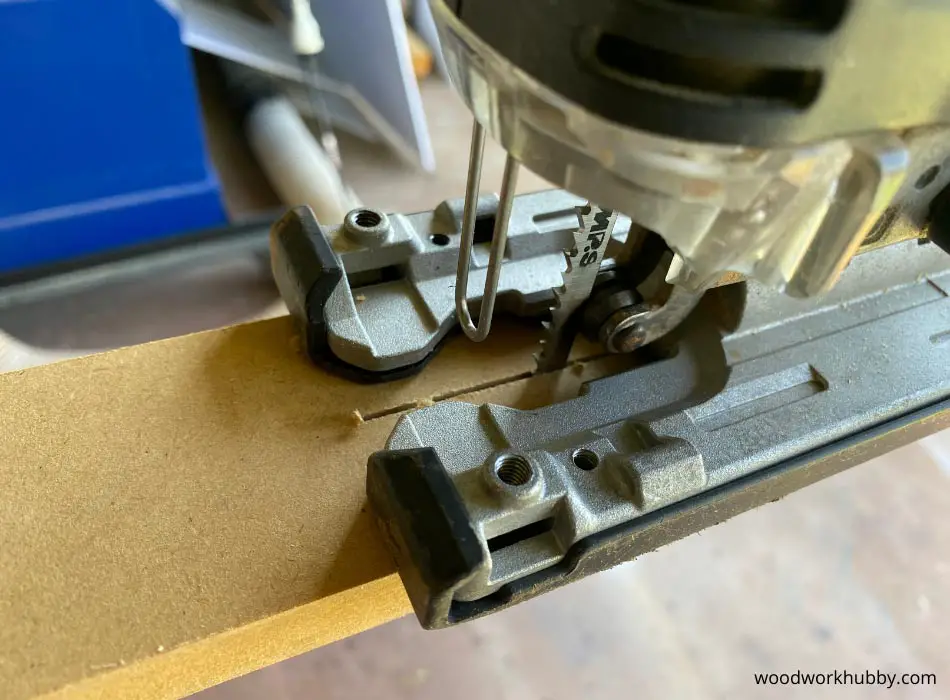
How Do You Cut an MDF Board with a Jigsaw?
Below I will show you the steps to cut MDF at home. It is very easy to cut and this guide will help you get the best possible finish.
Here are the steps to cut the MDF board with a jigsaw:
- Put on your safety gear
- Attach a suitable blade that has between 6-10 TPI. I recommend you grab some of these jigsaw blades as they work well!
- Clamp the MDF to your worktable
- Mark the cut areas
- Use the jigsaw to slice through the MDF
Let me explain these steps in more detail.
Step 1: Put on Your Safety Gear
For your own safety, you should always wear protective gear when using a jigsaw or any other type of power tool. You must have woodworking gloves and goggles. Especially when compared to cutting other types of wood, MDF tends to shed a lot of dust as you cut it. You don’t want that dust in your eye, so goggles are a must!
Step 2: Get the right jigsaw blade
What Is The Best Jigsaw Blade For Cutting MDF?
The best jigsaw blade for cutting MDF should have between 6-10 TPI (Teeth per Inch). The Jigsaw blade also needs to be a minimum of 1 inch (25mm) longer than the thickness of the MDF.
The number of teeth you select will depend a lot on the type of cut you want to make. I have cut hundreds of pieces of MDF as a cabinet maker so I have put together this handy chart that should help you decide.
| Type Of Cut | Best Jigsaw Blade To Use |
| Rough Straight Cut | 6 TPI (Teeth Per Inch) – This is the best set of blades |
| Neat Straight Cut | 10-12 TPI (Teeth Per Inch) – I recommend these blades |
| Curved Cuts | 12 TPI (Teeth Per Inch) – This set has the most blades to suit curves |
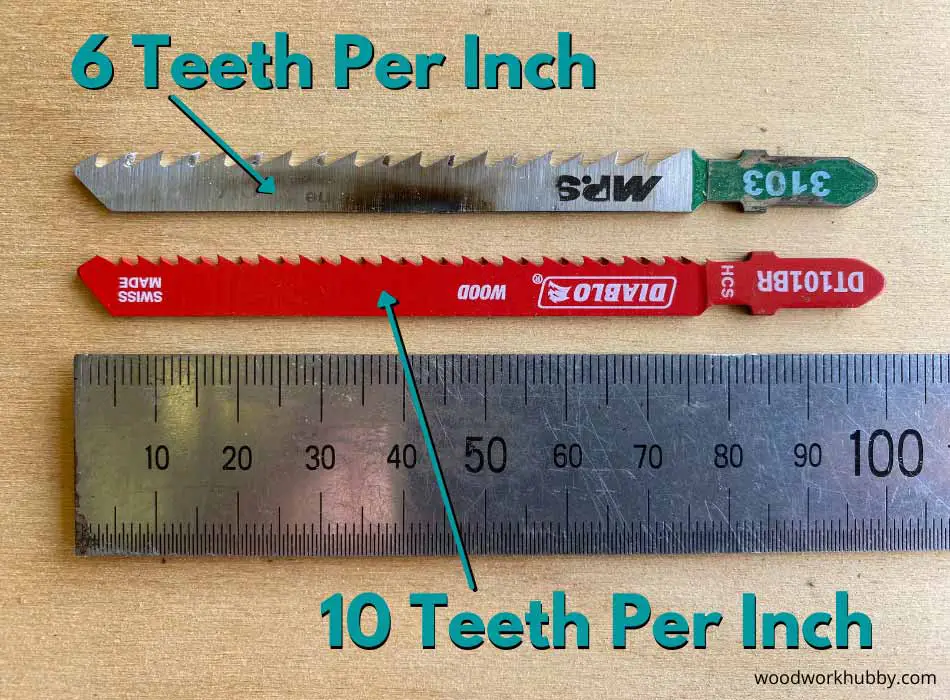
I also recommend you read my full guide on cutting with a jigsaw. This will also help you stop bending the jigsaw blade and tell you if you have the right one!
Step 3: Clamp the MDF
On your worktable or workstation, lay the MDF board flat. One edge of the board should be over your table’s edge. When the board is in place, secure it with clamps on all sides.
I’d recommend using a sawhorse for slicing down the middle of an MDF board.
After cutting MDF you may want to plane the surface to get it smooth. Did you know that you can plane MDF? I explain how in this post.
Step 4: Mark the Areas You Want to Cut
With the MDF board locked down, next, it’s time to plan your cuts. Using a pencil, draw an outline on the surface of the board where you’ll slice with your jigsaw. When you’re happy with the outline, you can go over it in pen or marker so you can see the outline clearly.
Step 5: Make the Cuts with the Jigsaw
Now it’s time to cut the MDF using your jigsaw. Angle the shoe of your jigsaw at your starting point of the cutting outline, keeping the blade lined up with the lines you traced. DON’T force the jigsaw into the workpiece. Let the blade do the cutting.
The density of MDF requires you to keep your motions purposeful yet slow. Never rush and don’t apply too much pressure either.
Did you know you can easily screw together MDF without it splitting? Read my article showing you how to screw MDF without splitting.
Forcing the jigsaw can cause
the blade to overheat & bend!
A big box store like Bunnings will cut MDF for you.
How Do You Cut Veneered MDF with a Jigsaw?
If you’re looking for an ultra-durable finish for your woodworking project, you might use veneered MDF. This is different from regular MDF since it has wood veneers atop the fiberboard pieces. Both sides will feature the veneer, which is 0.5 millimeters thick. A veneer finish requires a delicate and neat cut.
The best jigsaw blade for Veneered MDF is one that has 15-20 TPI (Teeth Per Inch) as these will prevent tear-out of the veneer. Alternating a downward cutting blade will prevent any damage to the surface veneer.
If you bought veneered MDF instead of the regular stuff, you can still use a jigsaw to slice through the wood. A Circular saw will work just as well.
Be sure to check out my article on why does my jigsaw jump?
Try adding masking tape to the line you intend to cut to prevent tear-out.
The steps I outlined above are applicable here. Some woodworkers will use a utility knife to score the veneered wood before cutting it with a jigsaw, as this can help the jigsaw slice through the dense wood more easily.
Did you know if a jigsaw can cut a 2×4? Find out in my article.
You can cut the wood on either side since veneered MDF usually features a layer of veneering on both sides. Just in case yours doesn’t, you want the side with the veneer facing up when making your cuts.
I’d recommend moving even more slowly than you do when cutting regular MDF, as the risk of chipping with laminate can be higher.
Can you burn MDF? You will be shocked at what I did!
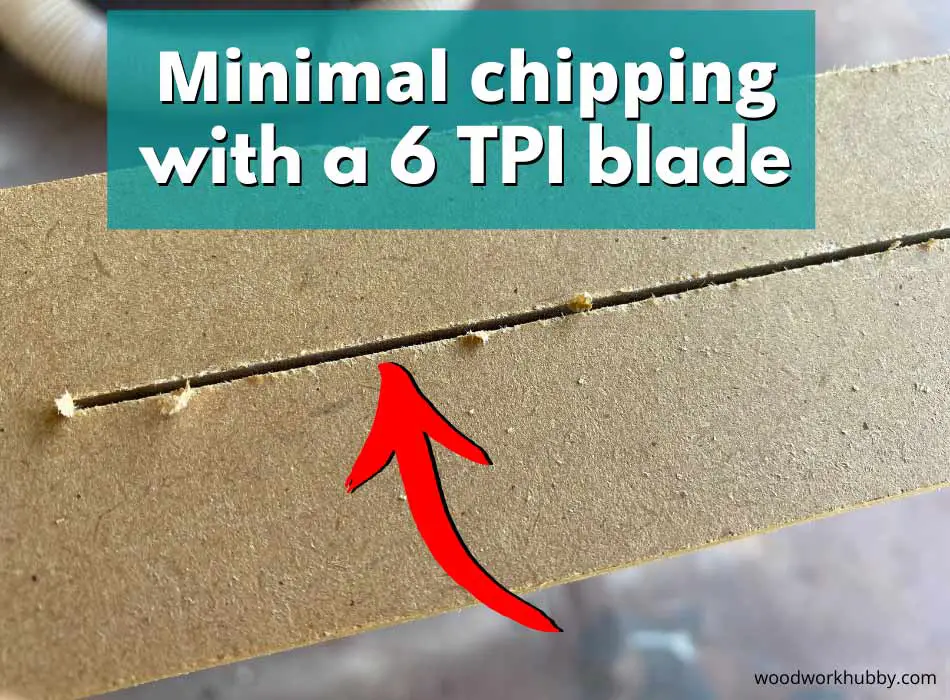
How Do You Cut MDF Without Chipping?
Every time you try to cut MDF, whether it’s laminated or not, it gives you a huge headache. Is it the tool you’re using? Maybe it’s your technique that’s incorrect? How do you cut MDF without it chipping?
Here are 9 tips for cutting MDF to prevent chipping:
- Use a fine blade that has 10 TPI (Teeth Per Inch) or greater
- Use a jigsaw blade that cuts downwards NOT up
- Set the oscillating setting on the jigsaw to zero
- Use a new or sharp jigsaw blade
- Use masking tape first and mark the line on the tape
- Use a utility knife with a sharp blade to score the surface first
- Cut slowly with the jigsaw – Don’t force it
- Ensure you use good quality MDF to ensure fibers are packed densely
- Turn the piece of MDF over and cut from the bottom
In my experience, using a brand-new blade more often and making sure it has a high teeth count, is enough to produce smooth cuts without chipping. MDF generally doesn’t chip like some other surfaces.
Let me explain each of these items a little more so you are clear on why these are important.
1. Use a fine blade
A jigsaw blade with more teeth on it will always produce a smoother cut. The small teeth remove material less rapidly which will help prevent tear-out. A course blade has fewer teeth and cuts very quickly thus giving you a rough finish.
The more teeth your blade has, the easier it will be to cut through the MDF without chipping or otherwise damaging it. Use a blade with at least 50 teeth and as many as 80 teeth. Many woodworkers report that a blade with 60 teeth is the sweet spot.
Can you use pocket holes in MDF? I explain how in this post.
2. Use a jigsaw blade that cuts downwards
You may have noticed that the most common jigsaw blades cut on the upwards stroke. This pulls waste wood upwards and can cause chipping of the surface. You can buy jigsaw blades that have teeth pointed down meaning they cut on the downward stroke. This means that any chip out will be on the bottom side of your board.
3. Set the oscillating setting to zero
Most decent-quality jigsaws have a dial on the side of them which alternates how far the blade comes out as it moves up and down. Selecting a 3 setting will give you a faster more aggressive cut.
If you find your blade is still producing chip out on number 3, try reducing the setting.
4. Use a new or sharp blade
Jigsaw blades are a commodity item so don’t be afraid to use a new blade whenever you need to produce a clean and neat cut. Don’t be tight! Blades are cheap. Grab a new one from here and you will thank me later.
6. Score the MDF with a utility knife
I touched on this before, but there’s something to be said for scoring the MDF wood before you use a circular saw or a jigsaw to cut through the board all the way. Give it a try if you have consistent issues with MDF splintering or chipping. Be sure that your knife blade is sharp.
7. Use masking tape
Sometimes I find it beneficial to apply masking tape onto the surface and then mark my line on the tape. The tape will help hold the surface fibers in place which can produce a neater cut.
Most times a good sharp blade is better than this approach. Give it a try though.
8. Use a good quality MDF
I always buy better quality materials such as MDF. This way I know the compaction rate of the MDF is greater giving a tighter bond. This bond greatly reduces the risk of tear-out. Did you know that when MDF is being made it starts out being 680mm thick!!?
9. Cut from the bottom of MDF
I actually do this quite a lot which works really well. I usually just cut with the jigsaw upside down on the bottom of the sheet. This requires you to be fairly skilled with a jigsaw. I recommend just flipping the sheet over, marking the back and just cutting from the back.
Because the jigsaw blade cuts upward, it will chip the bottom, leaving the good face with a clean-cut!
Can You Cut MDF with a Table Saw?
I’ve talked about using jigsaws and even circular saws for cutting MDF, but what about a table saw? Is that an option?
A table saw can easily cut an MDF sheet with an appropriate 80 teeth saw blade. A shop vac is recommended to remove the dust to prevent clogging of the cut.
Which Shop-vac has the most suction? I explain all in this article.
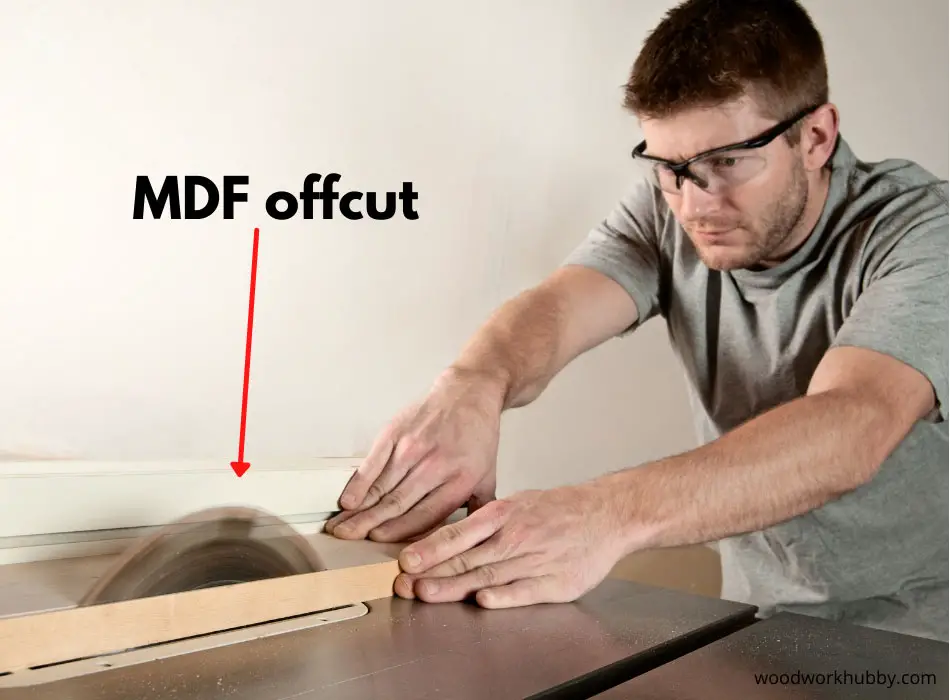
Let’s explain more. A table saw is intended for making straight cuts, including dado cuts, ripping cuts, and crosscuts. Dado cuts produce channel cuts with a flat bottom and square wall along the wood grain. You can connect box joints together perfectly with two dado cuts.
Ripping cuts mean cutting along the wood lengthwise. Crosscuts are cuts made into the wood’s grain.
Since table saws are most compatible with wood planks, your MDF sheet must be similarly sized. The same tips I’ve talked about throughout this article would apply when using a table saw to slice through MDF.
You should secure the board, use a blade with many small teeth, and cut slowly. I also suggest having a vacuum removal system of some sort, as if the dust gets up in the table saw’s motor, the saw could stop working.
Just be sure you have the blade on the right way if using a circular saw to do this. Most people don’t know which direction does a circular saw spin!
Conclusion
Cutting MDF is probably the easiest material to cut as it’s made up of small fibers. Tools such as jigsaws, circular saws, and even table saws are more than capable of cutting it. The key to preventing chips in the MDF (even veneered MDF) is taking your time with the cuts and scoring the wood beforehand.
Keep in the mind to make sure you are using a new or sharp blade as the glue inside the MDF can dull your blade are a few cuts.
-
What Is Cedar Wood Used For? (Why I Stopped Using It On Some Projects)
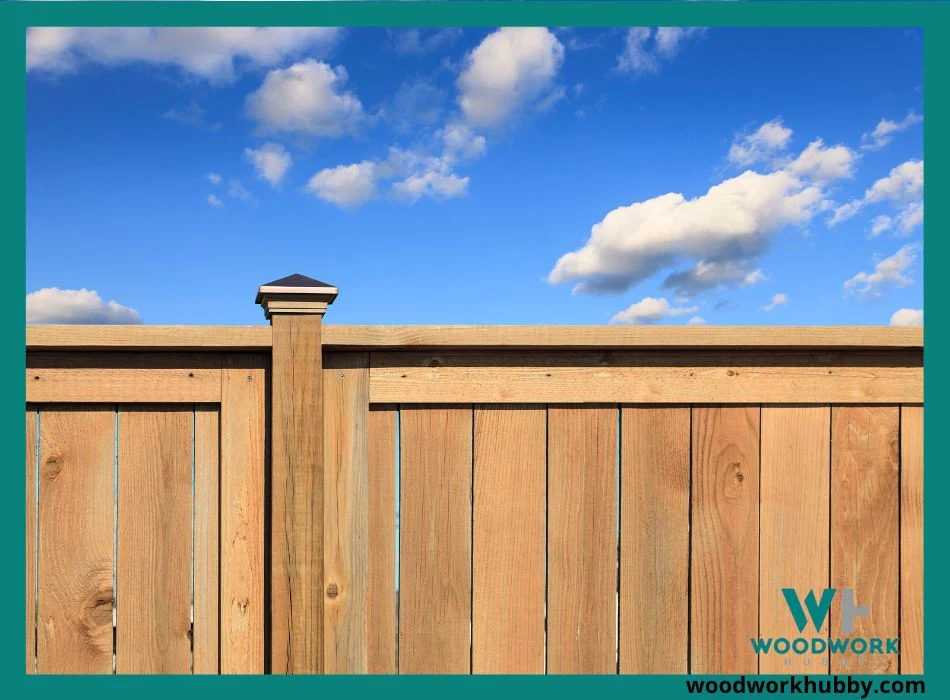
Cedar is one of my favorite wood types because I am tasked with perpetually protecting some of my passion projects. It is one of the most resilient woods out there, and I often find myself wishing that all woods were like Cedar because I cannot really use it for all projects. Cedar wood is used
-
12 Beginner Wood Carving Projects Anyone Can Carve
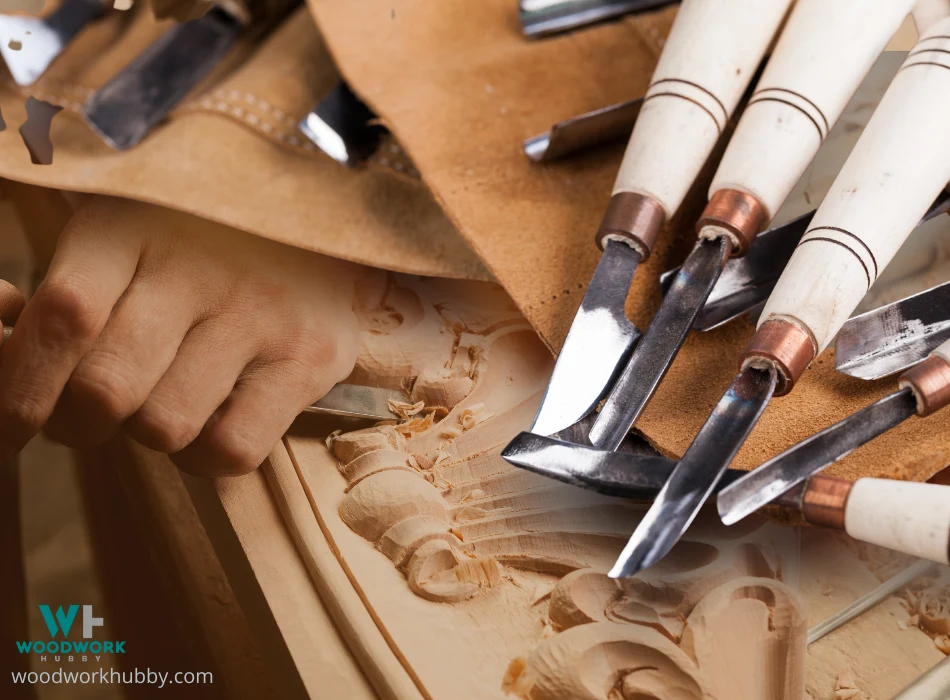
Beginner Wood Carving As a woodworker, I believe woodcarving is one of the simplest forms of woodwork anyone could get involved in. If you start out with the most basic projects first, you can quickly develop the skills and the enjoyment to continue the hobby. I find I get a great sense of achievement from
-
9 Essential Tips For Screwing Into MDF
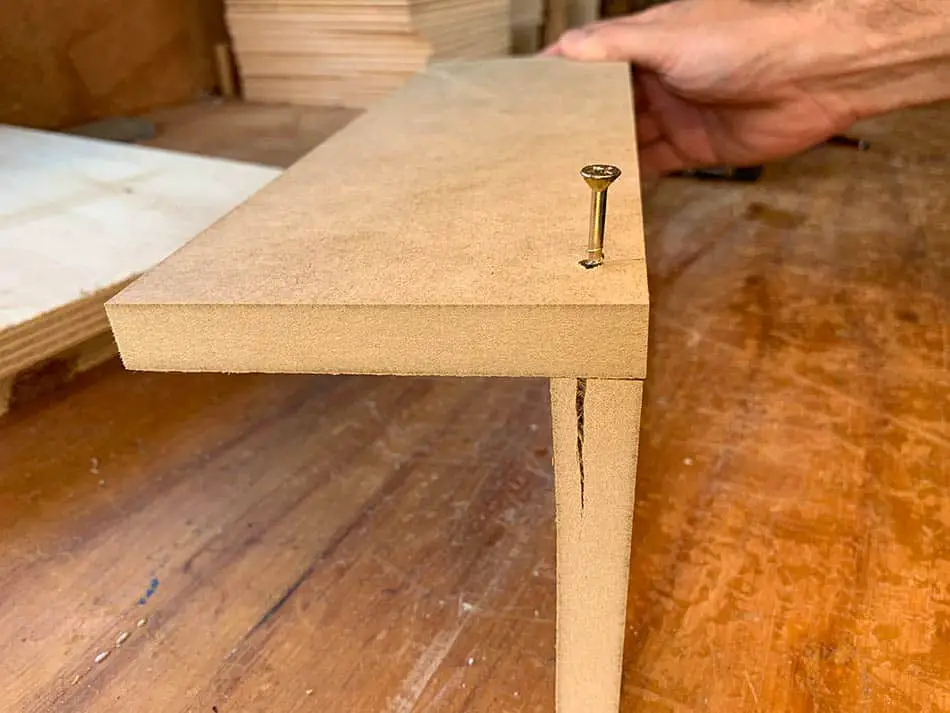
MDF seems to be the one thing that scares most people whenever they need to screw into its edge. I have been a cabinetmaker for the last 20 years and screwing MDF together is something we did every day.All of the apprentices would be always asking how to screw into the edges of MDF without
-
Maximizing Savings with Bulk Purchase of Wooden Cutting Boards for Your Restaurant

Running a successful restaurant business requires a delicate balance between offering top-notch culinary experiences and managing operational costs. One often overlooked but significant way to save money is by purchasing wooden cutting boards in bulk for your staff. These humble yet essential tools are the unsung heroes of any kitchen, and opting for cost-effective options
-
Top 5 Best Portable Table Saw For Fine Woodworking

Are you struggling to find the perfect portable table saw for your fine woodworking projects? I know exactly how daunting that can be, having faced the same hurdle once upon a time. After many years of working as a contractor, I have used many table saws and so I decided to identify the best portable
-
How To Remove Sticky Residue From Wood Table Top (It Works)

I totally get it. That unsightly sticky residue on your beautiful wooden table top just isn’t fun, is it? But how to remove sticky residue from wood table top without causing damage? After much research and plenty of experiments — some successful, others not so much — I’ve compiled quite a variety of methods to

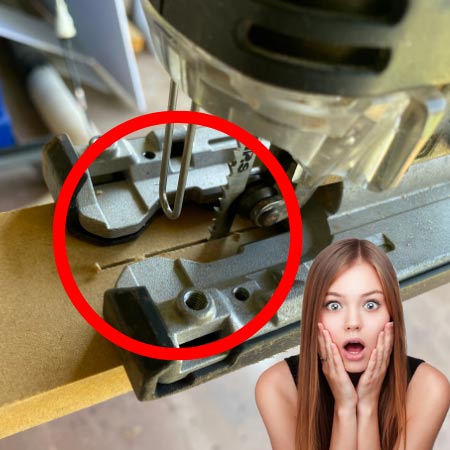
3 responses to “Can You Cut MDF With a Jigsaw? Ultimate Guide”
[…] you know sharp blades play a big role in how you cut MDF with a Jigsaw? I explain why in this […]
[…] Do you get tear out while cutting MDF with a jigsaw? My article explains how to prevent it and how to cut MDF with a jigsaw. […]
[…] you know, you can cut MDF with a jigsaw? Read about it […]